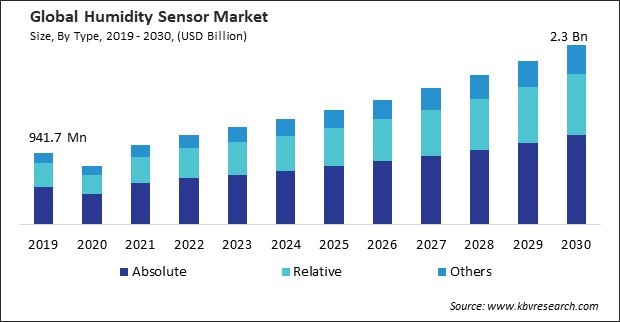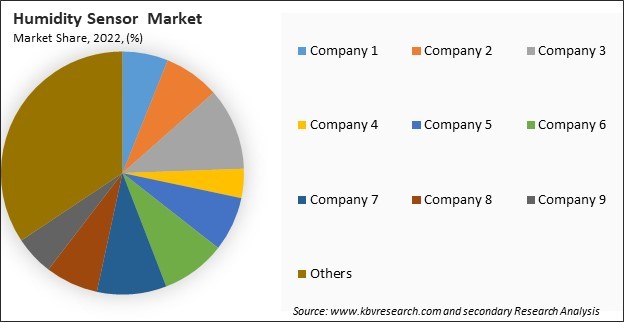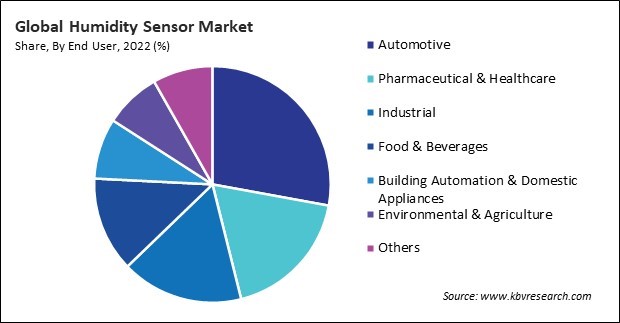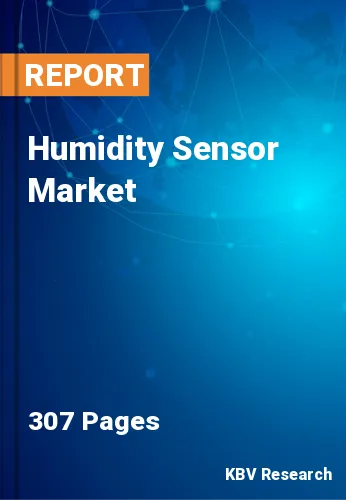“Global Humidity Sensor Market to reach a market value of USD 2.3 Billion by 2030 growing at a CAGR of 9.2%”
The Global Humidity Sensor Market size is expected to reach $2.3 billion by 2030, rising at a market growth of 9.2% CAGR during the forecast period. In the year 2022, the market attained a volume of 3504.1 thousand units, experiencing a growth of 9.0% (2019-2022).
In industrial settings, humidity can contribute to equipment corrosion. Humidity sensors monitor and control moisture levels, safeguarding machinery, electronic components, and sensitive equipment from corrosion-related damage. Humidity control is crucial in optimizing various production processes. Consequently, the industrial segment will generate a 17.1% revenue share of the market by 2030. Also, Russia would utilize 56.0 thousand units of humidity sensor at industrial by 2030. Industries such as textiles, printing, and paper manufacturing rely on humidity sensors to maintain ideal moisture levels, preventing issues like paper curling, static electricity, and dimensional variations in materials.

Humidity sensors are used in smart home devices to monitor and control indoor climate conditions. This is especially important for smart thermostats and climate control systems, as they can adjust temperature and humidity levels for comfort and energy efficiency. Wearable devices like fitness trackers and smartwatches often incorporate humidity sensors for more comprehensive health monitoring. Hence, these factors will boost the demand for humidity sensors in the future.
Additionally, Humidity sensors are integral components of building automation systems within smart buildings. These sensors help regulate climate control systems, ensuring optimal indoor conditions for occupants. This is crucial for both comfort and energy efficiency. In smart buildings, humidity sensors contribute to energy management strategies. Thus, these factors will assist in the growth of the market.
However, in price-sensitive markets, cost is a critical factor influencing purchasing decisions. If the manufacturing costs of humidity sensors are high, the final product's price may be elevated, making it less competitive compared to lower-cost alternatives. This, in turn, can limit the adoption of humidity sensors in certain applications and industries. Hence, these factors can assist in the growth of the market.

The leading players in the market are competing with diverse innovative offerings to remain competitive in the market. The above illustration shows the percentage of revenue shared by some of the leading companies in the market. The leading players of the market are adopting various strategies in order to cater demand coming from the different industries. The key developmental strategies in the market are Acquisitions, and Partnerships & Collaborations.
On the basis of end user, the market is divided into automotive, pharmaceutical & healthcare, industrial, building automation & domestic appliances, food & beverages, environmental & agriculture, and others. The automotive segment recorded the 27.8% revenue share in the market in 2022. In terms of volume, pharmaceutical & Healthcare segment would generate 23.5 thousand units in 2022. Humidity sensors are integral to vehicle Heating, Ventilation, and Air Conditioning (HVAC) systems. These sensors help regulate humidity levels inside the vehicle cabin, contributing to passenger comfort. Therefore, these factors can assist in the expansion of the segment.

Based on type, the market is segmented into absolute, relative, and others. In 2022, the relative segment garnered a 32.9% revenue share in the market. Relative humidity sensors are vital in HVAC (Heating, Ventilation, and Air Conditioning) systems. As the demand for energy-efficient and smart HVAC systems grows, the need for accurate and responsive relative humidity sensing also increases. These sensors contribute to maintaining optimal indoor air quality and occupant comfort. Hence, the segment will expand rapidly in the coming years.
Free Valuable Insights: Global Humidity Sensor Market size to reach USD 2.3 Billion by 2030
By region, the market is segmented into North America, Europe, Asia Pacific, and LAMEA. The North America segment procured a 29.7% revenue share in the market in 2022. The integration of humidity sensors in smart building technologies and HVAC (Heating, Ventilation, and Air Conditioning) systems is on the rise. North America, with its focus on energy efficiency and building automation, drives the demand for humidity sensors in creating comfortable and environmentally friendly indoor spaces. Thus, these factors can boost the demand in the segment.
| Report Attribute | Details |
|---|---|
| Market size value in 2022 | USD 1.2 Billion |
| Market size forecast in 2030 | USD 2.3 Billion |
| Base Year | 2022 |
| Historical Period | 2019 to 2021 |
| Forecast Period | 2023 to 2030 |
| Revenue Growth Rate | CAGR of 9.2% from 2023 to 2030 |
| Revenue Growth Rate | Volume in Thousand Units, Revenue in USD Billion, and CAGR from 2019 to 2030 |
| Number of Pages | 308 |
| Number of Tables | 590 |
| Report coverage | Market Trends, Revenue Estimation and Forecast, Segmentation Analysis, Regional and Country Breakdown, Market Share Analysis, Porter’s 5 Forces Analysis, Company Profiling, Companies Strategic Developments, SWOT Analysis, Winning Imperatives |
| Segments covered | Type, End User, Region |
| Country scope |
|
| Companies Included | General Electric Company, Sensirion AG, TE Connectivity Ltd., Honeywell International, Inc., Continental AG, Infineon Technologies AG, Robert Bosch GmbH, Sensata Technologies Holdings PLC, Omron Corporation, Hitachi, Ltd. |
By Type (Volume, Thousand Units, USD Billion, 2019-2030)
By End User (Volume, Thousand Units, USD Billion, 2019-2030)
By Geography (Volume, Thousand Units, USD Billion, 2019-2030)
The Market size is projected to reach USD 2.3 billion by 2030.
Increasing Demand for The Consumer Electronics are driving the Market in coming years, however,High Manufacturing Costs Associated with Humidity Sensors restraints the growth of the Market.
General Electric Company, Sensirion AG, TE Connectivity Ltd., Honeywell International, Inc., Continental AG, Infineon Technologies AG, Robert Bosch GmbH, Sensata Technologies Holdings PLC, Omron Corporation, Hitachi, Ltd.
In the year 2022, the market attained a volume of 3504.1 thousand units, experiencing a growth of 9.0% (2019-2022).
The Absolute segment is leading the Market by Type in 2022 there by, achieving a market value of $1.1 billion by 2030.
The Asia Pacific region dominated the Market by Region in 2022 there by, achieving a market value of $876.5 million by 2030.
Our team of dedicated experts can provide you with attractive expansion opportunities for your business.

 Drivers
Drivers
 Restraints
Restraints
 Opportunities
Opportunities
 Challenges
Challenges
